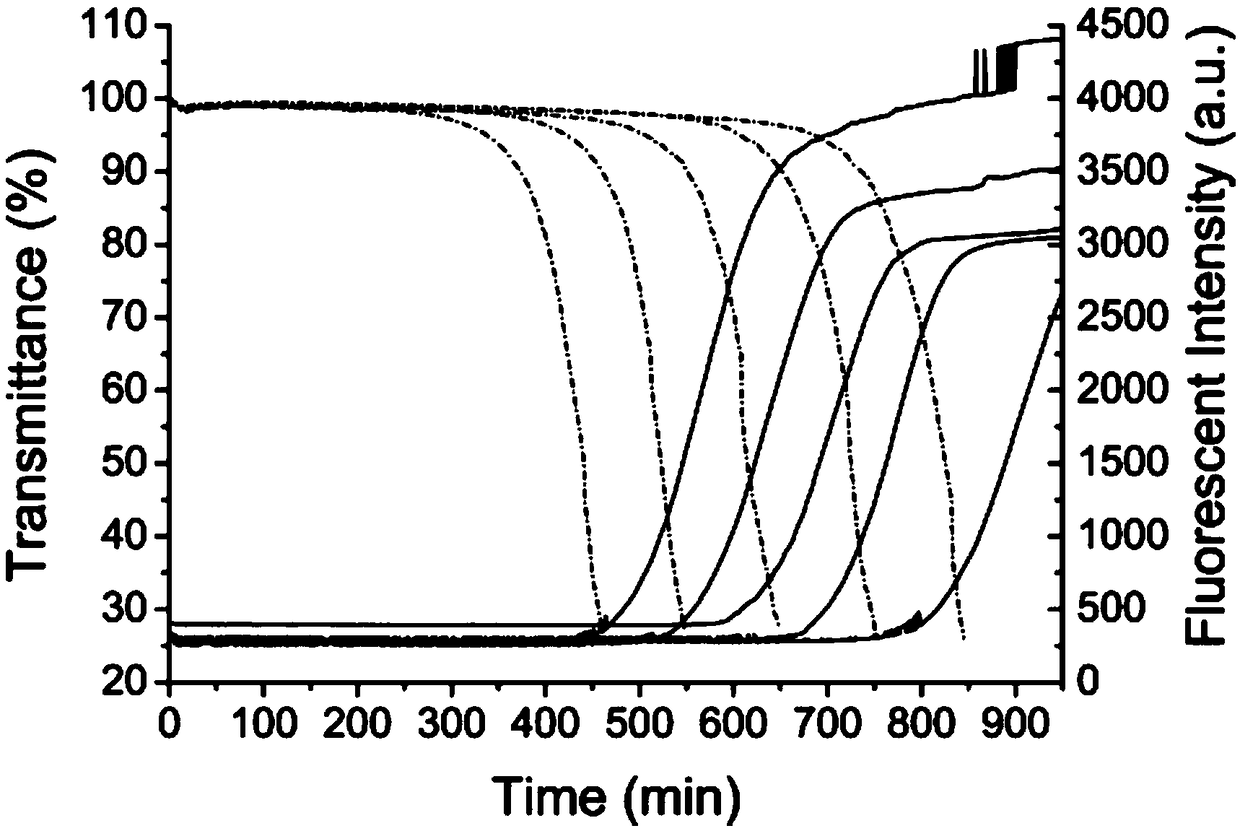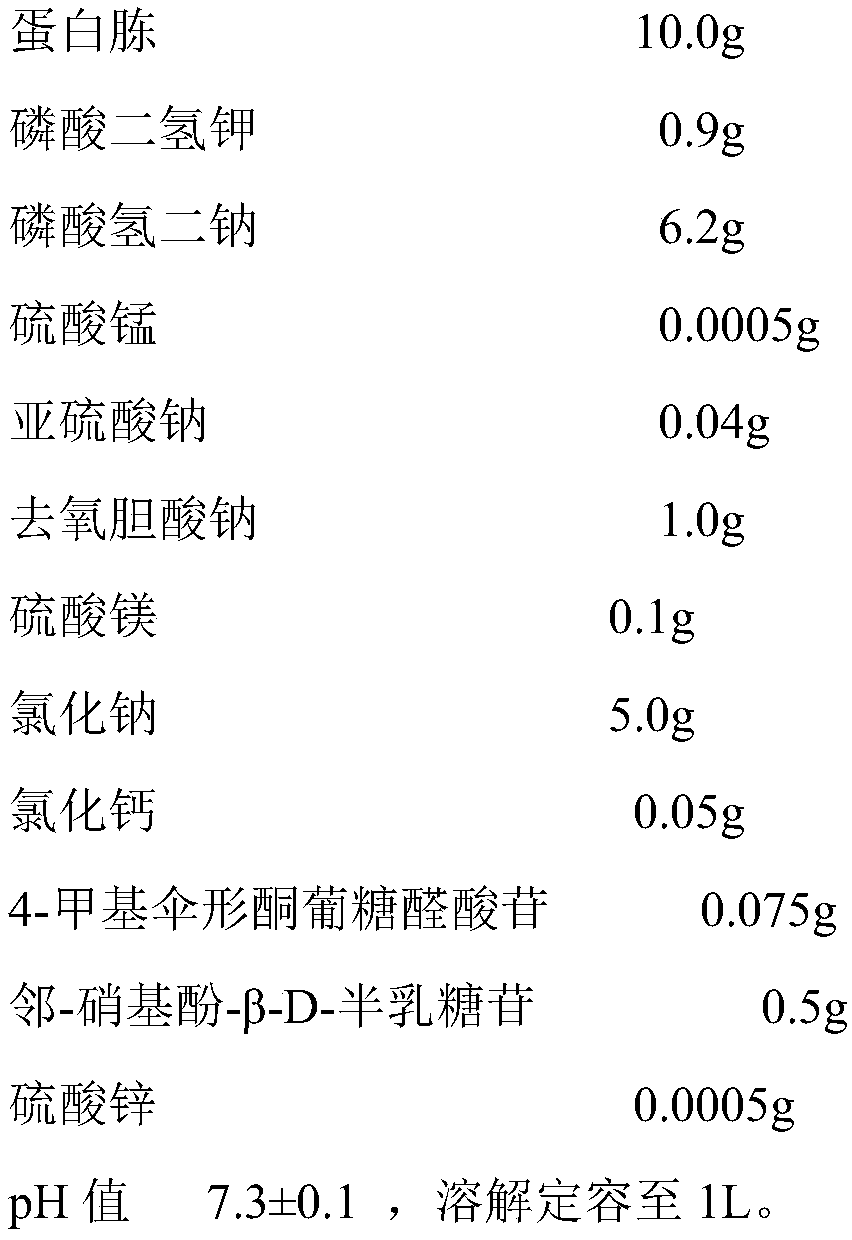4-methylumbelliferone enrichment material and application thereof
A methylumbelliferone and enrichment technology, applied in the field of microbial detection, can solve the problems of unfavorable fluorescence results and interpretation, achieve accurate detection results and save detection time
- Summary
- Abstract
- Description
- Claims
- Application Information
AI Technical Summary
Problems solved by technology
Method used
Image
Examples
Embodiment 1
[0018] Accurately weigh 5 g of agarose and place it in a 250 mL three-neck round bottom flask. Add 60mL NaOH solution (containing NaOH2.4g) and 30mL dimethyl sulfoxide, then place it in a constant temperature water bath at 38°C and stir slowly while slowly adding 5mL 1-chlorooctane, then increase the stirring speed to 300rpm, and react at constant temperature for 2h . After the reaction, the agarose was washed 5 times with acetone and deionized water respectively, centrifuged, dried, and set aside.
[0019] Take 1g of 4-methylumbelliferone-enriched material, 4g of agarose, add 200mL of water, melt the agarose in a microwave oven, stir evenly, add 500μL of the above-mentioned agarose mixture melted to each 24-well plate well, add 75% ethanol after solidification After sterilization, blow it on the ultra-clean bench until there is no obvious water trace. Use Colilert-18 reagent for sterile filtration, add 2 mL to each well, add 100 μL each of diluted Escherichia coli DH5α and ...
Embodiment 2
[0022] Accurately weigh 5 g of agarose and place it in a 250 mL three-neck round bottom flask. Add 60mL of NaOH solution (containing 2.4g of NaOH) and 30mL of dimethyl sulfoxide, then place it in a constant temperature water bath at 50°C and stir slowly while adding 5mL of 6-chlorohexanoic acid slowly, then increase the stirring speed to 300rpm, and react at constant temperature for 2h . After the reaction, the agarose was washed 5 times with acetone and deionized water respectively, centrifuged, dried, and set aside.
[0023] Take 2g of 4-methylumbelliferone enrichment material, 3g of agarose, add 100mL of water, melt the agarose in a microwave oven, stir evenly, add 500μL of the above-mentioned agarose mixture melted into each 24-well plate well, add 75% ethanol after solidification After sterilization, blow it on the ultra-clean bench until there is no obvious water trace. Add 2 mL to each well after aseptic filtration using the medium in the table below, insert 100 μL ea...
Embodiment 3
[0028] Accurately weigh 5 g of agarose and place it in a 250 mL three-neck round bottom flask. Add 60mL of NaOH solution (containing 4.8g of NaOH) and 30mL of dimethyl sulfoxide, then place it in a constant temperature water bath at 70°C and stir slowly while slowly adding 5mL of 1-chloroheptane, then increase the stirring speed to 300rpm, and react at constant temperature for 2h . After the reaction, the agarose was washed 5 times with acetone and deionized water respectively, centrifuged, dried, and set aside.
[0029]Take 3g of 4-methylumbelliferone enrichment material, 2g of agarose, add 200mL of water, melt the agarose in a microwave oven, stir evenly, add 500μL of the above-mentioned agarose mixture melted to each 24-well plate well, add 75% ethanol after solidification After sterilization, blow it on the ultra-clean bench until there is no obvious water trace. Use Colilert-18 reagent for sterile filtration, add 2 mL to each well, add 100 μL each of diluted Escherichia...
PUM
| Property | Measurement | Unit |
|---|---|---|
| concentration | aaaaa | aaaaa |
Abstract
Description
Claims
Application Information
 Login to View More
Login to View More - Generate Ideas
- Intellectual Property
- Life Sciences
- Materials
- Tech Scout
- Unparalleled Data Quality
- Higher Quality Content
- 60% Fewer Hallucinations
Browse by: Latest US Patents, China's latest patents, Technical Efficacy Thesaurus, Application Domain, Technology Topic, Popular Technical Reports.
© 2025 PatSnap. All rights reserved.Legal|Privacy policy|Modern Slavery Act Transparency Statement|Sitemap|About US| Contact US: help@patsnap.com



